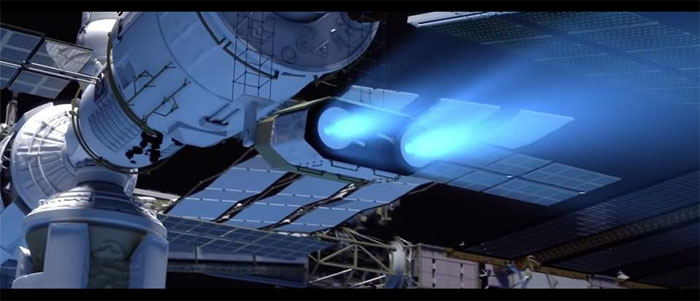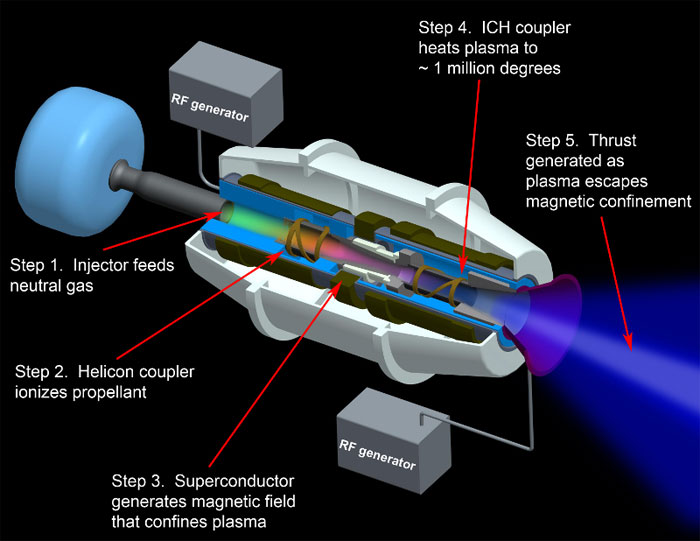.

An artist's concept depicts the Ad Astra plasma rocket.
.
A potential advancement in the United States' electric propulsion capability for the future of spaceflight is being underscored by a new NASA contract to support work on the VASIMR project – short for the Variable Specific Impulse Magnetoplasma Rocket.
VASIMR works with plasma, an electrically charged gas that can be heated to extreme temperatures by radio waves and controlled and guided by strong magnetic fields.
Ad Astra Rocket Company announced today that it has completed contract negotiations with NASA on the group's Next Space Technology Exploration Partnerships (NextSTEP) award and are now entering the execution phase of the project. [How to Launch Superfast Trips to Mars]
.
Long duration, high-power test

This diagram details how the VASIMR plasma rocket works.
.
Under the award, Ad Astra is to conduct a long duration, high-power test of an upgraded version of the VX-200 VASIMR prototype, the VX-200SS ("SS" for steady state), for a minimum of 100 hours continuously at a power level of 100 Kilowatts.
Testing will be conducted in Ad Astra's large, state-of-the-art vacuum chamber in the company's Webster, Texas facility.
"These experiments aim to demonstrate the engine's new proprietary core design and thermal control subsystem and to better estimate component lifetime," according to an Ad Astra Rocket Company press statement.
Raising the readiness level
In the past, Ad Astra advanced the technology readiness level (TRL) of the VASIMR engine almost exclusively with private funding.
That funding enabled the company to complete more than 10,000 successful high-power firings, demonstrating the engine's reliability and performance, with no measurable signs of engine wear. However, those tests were of short-duration, lasting less than one minute.
A longer duration test is needed to validate the new rocket core design for extended operation in space. Plasma rockets feature exhaust velocities far above those achievable by their chemical cousins, so their fuel consumption is extremely low.
50/50 cost partnership
The NASA and Ad Astra executed the contract — a three-year, fixed price agreement — on Aug. 7, 2015 for a total value of just over $9 million.
The agreement is structured as a one-year contract with two additional one-year extensions based on the accomplishment of mutually agreed upon progress milestones, Ad Astra added in their press statement.
NASA's Advanced Exploration Systems Program sponsors NextSTEP awards in a 50/50 cost partnership with industry.
Former astronaut, Franklin Chang Díaz, serves as Chairman of the Ad Astra Board and Chief Executive Officer – a space traveler with NASA for 25 years and a veteran of seven space shuttle flights.
Quelle: SC
4590 Views
